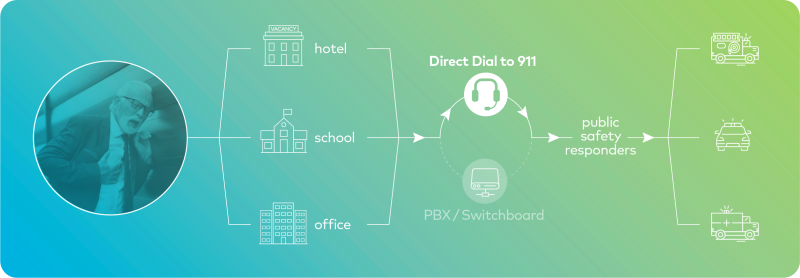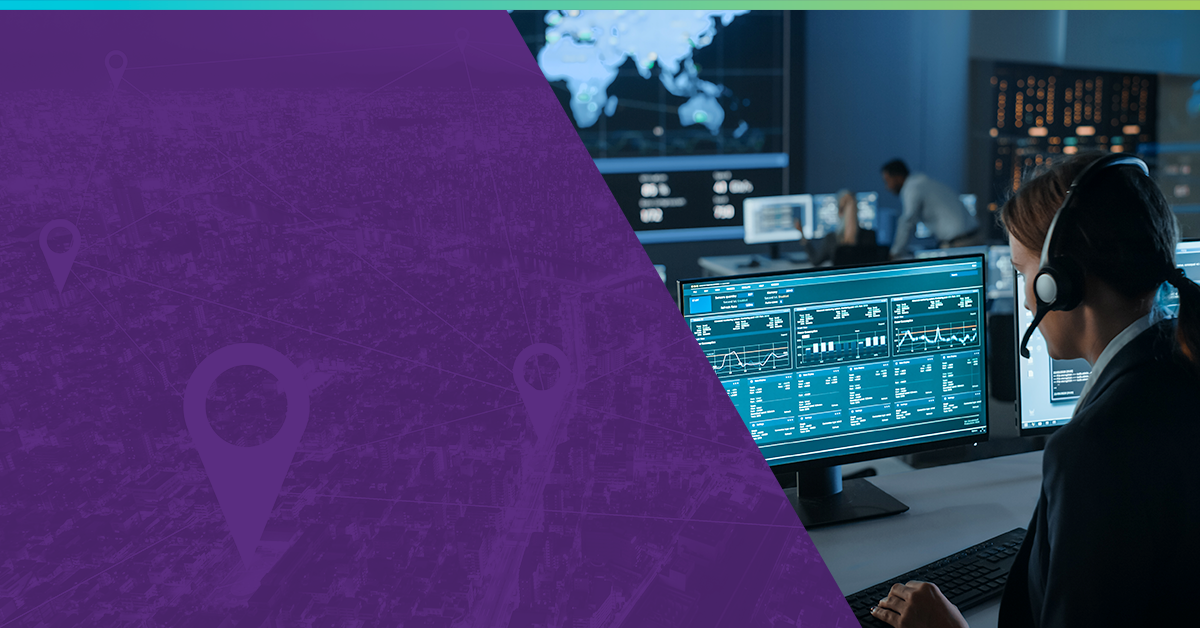A Watershed Moment for Smarter Cities
There’s one thing to know about 2022: Many more communities across the U.S. will become smarter than they were before, maybe even smart cities. What...
When first introduced, the process of dialing “911” for emergency assistance was fairly simple for consumers: 1. Pick up your handset. 2. Dial the three-digit code. 3. Listen, follow instructions and speak clearly.
With the proliferation of smart devices, sensors, connected vehicles and other emerging technologies, making that 911 connection seems a bit more mysterious. According to CTIA, The Wireless Association, of the 240M 911 calls made annually, 80% originate from wireless devices. The device itself is just the tip of the iceberg. What only those familiar with 911 know is that an amazing workflow below the public’s line of vision creates a continuum of high-tech processes for routing, delivery, data inputs and response that gets the right information to the right people at the right time.
Although it may seem confusing, innovators and professionals within the 911 telecommunications community have more than kept pace with the technology--without leaving Public Safety Answering Points (PSAP) with smaller staff and budgets behind. From landlines to cell phones, to IoT-connections that can deliver astounding amounts of relevant, life-saving data to give first responders greater situational awareness, there are answers to your questions about how 911 works. Let’s take a look at the basics, and then at what happens when a Request for Assistance (RFA) is initiated through a security alarm or alert activation.
Believe it or not, that was the short version of what happens when a 911 call is made! Just imagine how more information already aggregated from devices and sensors can expedite this process and provide even more accurate data!
Of course, connecting to 911 through cell phones and other devices is very different than landline requests for assistance (RFA). Operationally, users need to become familiar with safety features whenever they begin using a new device. For example, with Voice Over Internet Protocol (VoIP) devices, users need to register an Internet of Things (IoT) endpoint to make sure an RFA is routed as a voice call to 911. In the instance of a security alarm or alert, devices may send RFAs through a call center, often called a “Central Station”.
Call centers for security monitoring companies, also known as Central Stations, provide a crucial link for verifying and initiating an emergency response as they monitor various types of devices or sensors for alerts that may possibly need an emergency response. Specifically, when an alarm or alert goes off, the Central Station must verify whether 911 is needed. Once they’ve verified or, after a period of time, have been unable to verify this incident, they dial a 10-Digit Non-Emergency Administrative line to the geo-relevant 911 center that they have on file.
Something important to note is that this 10-Digit Non-Emergency Administrative line does not ring into the 911 center in the traditional call queue with emergency calls. This is because most of the calls that ring through on this line are from central stations and are false alarms.
The aspect of human verification cannot be overlooked. Although administrative functions within the Central Station process may require extra staffing and budgetary resources, human verification can be a valuable asset for a business. Central Stations can be used as a “Center of Last Resort”, meaning that a designated contact, such as a homeowner, business owner, corporate security staff, or other emergency contact, will be the first to receive notice of an alarm or activation and will notify 911 if necessary.
As mentioned in the Central Station example, a 10-Digit Non-Emergency number can be provided to companies beyond the Central Station. With this connection, when an incident occurs and based on a pre-provisioned address, the 10-Digit phone number is exposed and is able to be dialed.
VoIP and landline connections to 911 depend upon pre-provisioned PBX or phone system endpoints with locations that tie back to civic addresses when 911 is dialed. Recent legislation such as Kari’s Law and the Ray Baum’s Act require certain changes and updates to these systems.
For years registering IoT devices as “VOIP Endpoints” has been the answer for how to contact 911 from say a medical device or personal safety device. The challenge with this is that these devices have dynamic locations that can be changing. With a VOIP or landline 911 call, only one location can be provided.

Voice 911
A voice-to-911 call, supplemented with additional data from available resources provides the ability to dynamically route voice 911 calls based on latitude and longitude (x/y) coordinates rather than a static civic address with additional information from smart devices. Some providers route this voice 911 call without supplemental data first, and then send the supplemental data via an over-the-top (OTT) app to 911. This doesn’t really guarantee delivery to a 911 telecommunicator, and they may not know to even look at the OTT window to read the information.
Data Messaging to 911 (now offered exclusively by Intrado) provides a link to the supplemental data when available within the existing call flow of the 911 center. This means that providers (in particular, IoT providers) are able to send a data message to the geo-relevant 911 Center with live messaging back and forth, in addition to the supplemental data about the incident provided by the smart device/sensor. If the 911 center is text-to-911-enabled, there are no upgrades or costs for the 911 Center in order to receive data messages. The information that comes across a data message to 911 is textual with the inclusion of a short web link where rich data can be accessed.
What if the 911 Center where the emergency is occurring doesn’t support text to 911? Intrado’s Emergency Data Broker API has a fallback mechanism that will generate a voice 911 call to the appropriate 911 Center when data messaging isn’t available.
Integrating the IoT into the 911 workflow is a beneficial reality for public safety, and makes good of the rich data now available. Click here to learn more about 911 Data Messaging.
Basic Block CSS Applied

There’s one thing to know about 2022: Many more communities across the U.S. will become smarter than they were before, maybe even smart cities. What...
.jpg)
Most people don’t dial 9-1-1 and then hang up. Most people don’t realize that a 9-1-1 abandoned call taxes already limited emergency response and...

Those of us from the information technology profession did you a disservice many years ago when we first drew the early concept of the Internet—of...

When 911 is dialed, most organizations know that they need to deliver both the call and the caller’s location information to the appropriate Public...